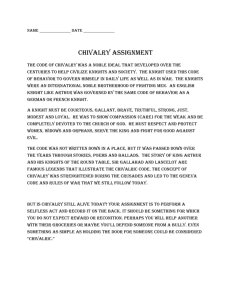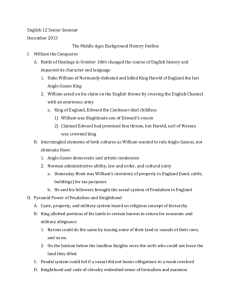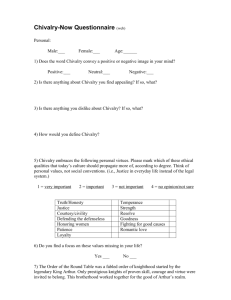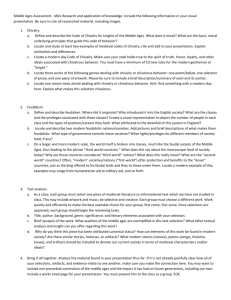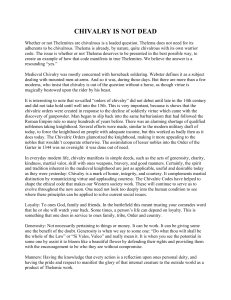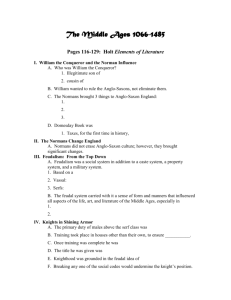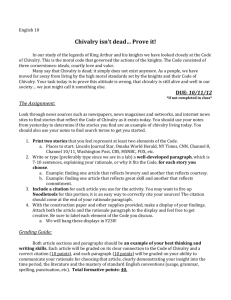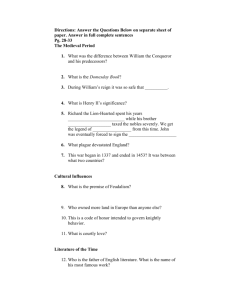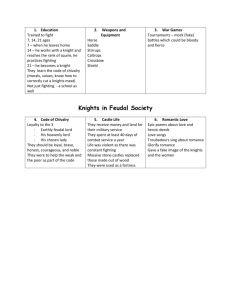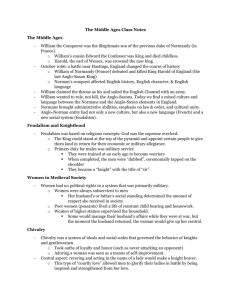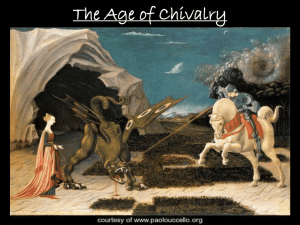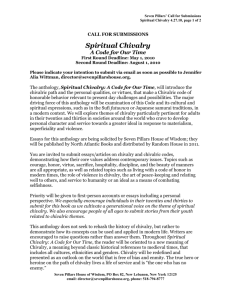Word Version
advertisement
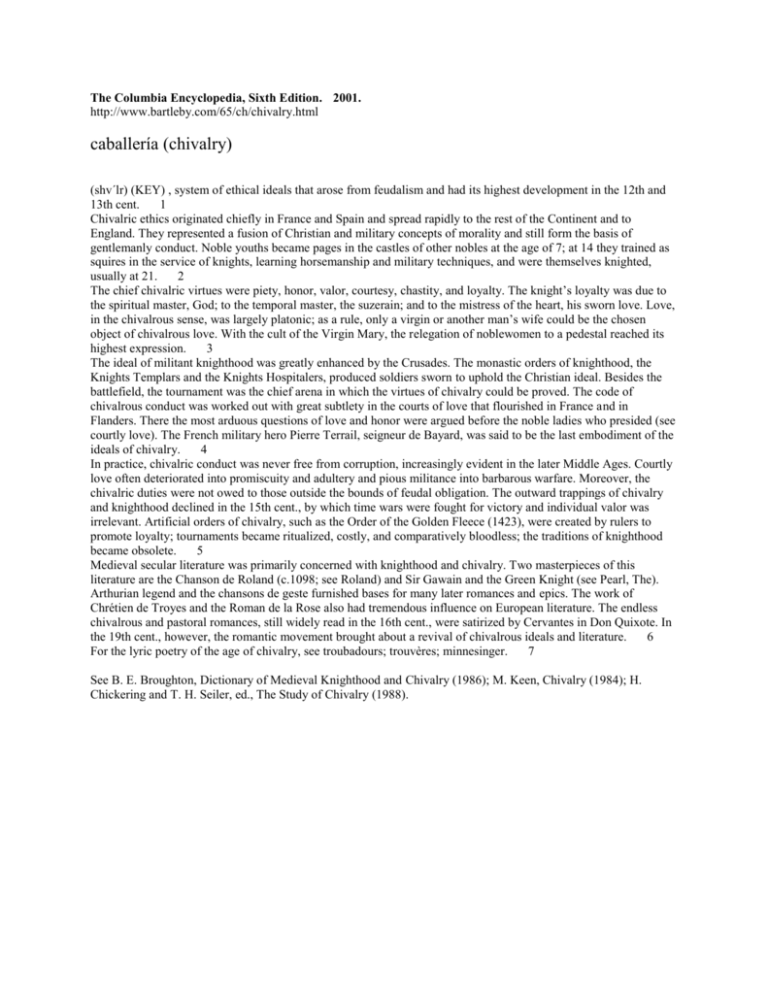
The Columbia Encyclopedia, Sixth Edition. 2001. http://www.bartleby.com/65/ch/chivalry.html caballería (chivalry) (shv´lr) (KEY) , system of ethical ideals that arose from feudalism and had its highest development in the 12th and 13th cent. 1 Chivalric ethics originated chiefly in France and Spain and spread rapidly to the rest of the Continent and to England. They represented a fusion of Christian and military concepts of morality and still form the basis of gentlemanly conduct. Noble youths became pages in the castles of other nobles at the age of 7; at 14 they trained as squires in the service of knights, learning horsemanship and military techniques, and were themselves knighted, usually at 21. 2 The chief chivalric virtues were piety, honor, valor, courtesy, chastity, and loyalty. The knight’s loyalty was due to the spiritual master, God; to the temporal master, the suzerain; and to the mistress of the heart, his sworn love. Love, in the chivalrous sense, was largely platonic; as a rule, only a virgin or another man’s wife could be the chosen object of chivalrous love. With the cult of the Virgin Mary, the relegation of noblewomen to a pedestal reached its highest expression. 3 The ideal of militant knighthood was greatly enhanced by the Crusades. The monastic orders of knighthood, the Knights Templars and the Knights Hospitalers, produced soldiers sworn to uphold the Christian ideal. Besides the battlefield, the tournament was the chief arena in which the virtues of chivalry could be proved. The code of chivalrous conduct was worked out with great subtlety in the courts of love that flourished in France and in Flanders. There the most arduous questions of love and honor were argued before the noble ladies who presided (see courtly love). The French military hero Pierre Terrail, seigneur de Bayard, was said to be the last embodiment of the ideals of chivalry. 4 In practice, chivalric conduct was never free from corruption, increasingly evident in the later Middle Ages. Courtly love often deteriorated into promiscuity and adultery and pious militance into barbarous warfare. Moreover, the chivalric duties were not owed to those outside the bounds of feudal obligation. The outward trappings of chivalry and knighthood declined in the 15th cent., by which time wars were fought for victory and individual valor was irrelevant. Artificial orders of chivalry, such as the Order of the Golden Fleece (1423), were created by rulers to promote loyalty; tournaments became ritualized, costly, and comparatively bloodless; the traditions of knighthood became obsolete. 5 Medieval secular literature was primarily concerned with knighthood and chivalry. Two masterpieces of this literature are the Chanson de Roland (c.1098; see Roland) and Sir Gawain and the Green Knight (see Pearl, The). Arthurian legend and the chansons de geste furnished bases for many later romances and epics. The work of Chrétien de Troyes and the Roman de la Rose also had tremendous influence on European literature. The endless chivalrous and pastoral romances, still widely read in the 16th cent., were satirized by Cervantes in Don Quixote. In the 19th cent., however, the romantic movement brought about a revival of chivalrous ideals and literature. 6 For the lyric poetry of the age of chivalry, see troubadours; trouvères; minnesinger. 7 See B. E. Broughton, Dictionary of Medieval Knighthood and Chivalry (1986); M. Keen, Chivalry (1984); H. Chickering and T. H. Seiler, ed., The Study of Chivalry (1988).

